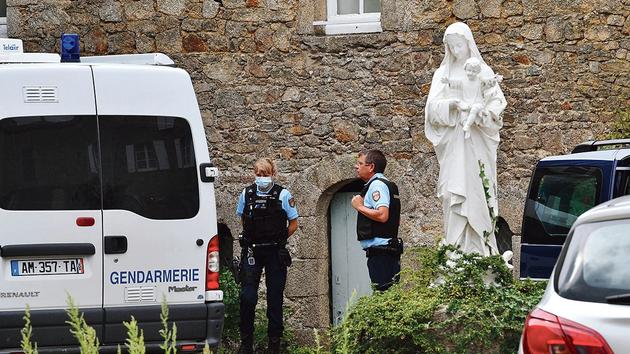Emmanuel Abayisenga, originally from Rwanda, confessed this morning to having killed a priest in Saint-Laurent-sur-Sèvre (Vendée).
At the end of the day, he was placed in a psychiatric hospital, his psychological state being considered incompatible with police custody.
According to information from our colleagues at
La Croix
, he was born in 1981, in Muhanga, in the southern province, in Rwanda.
He comes from a family of twelve brothers and sisters, a father who was a teacher and a mother who brought them up in strict Catholicism.
He arrived in France in 2012, and immediately joined Catholic communities, proof of the importance of religion for him.
He invests himself in the Red Cross, in the Secours Catholique, and officially becomes a volunteer in the cathedral of Nantes, at Easter 2019. He must check that all the doors of the cathedral are closed on Friday evening.
It is also used at the altar in white dawn, during Sunday evening mass.
Read also:
Father Olivier Mayor killed in Vendée: a life devoted to the poor and the excluded
During these three years at the cathedral of Nantes, he even aims to become a pastoral animator with refugees, and begins training.
In 2016, Emmanuel Abayisenga went to Rome, with a delegation from Nantes, on the occasion of the jubilee for socially excluded people, organized by the Fratello association.
It was on this occasion that he met Pope Francis.
Immortalized in a series of photos, this handshake shows Emmanuel Abayisenga smiling and even slipping a word to the Pope.
Assaulted on New Years Eve 2018
On July 18, 2020, everything changes.
Emmanuel Abayisenga is the last to leave Nantes cathedral, and therefore the first suspect.
He quickly admits to having burned down the cathedral and therefore finds himself in pre-trial detention in the Nantes remand center.
It is a case that dates back to two years before the fire which seems to have marked his relationship with the religious building.
Read also:
Priest killed in Vendée: the inhabitants between emotion and anger
He tells
La Croix in
fact that he was assaulted on New Years Eve 2018.
“Father, I need you”
, we would have whispered to him. According to what he reported to the police, it was 7:30 p.m. and Emmanuel Abayisenga was closing the last door of the cathedral.
“I initially thought he was a cathedral security guard, I told him that I was not a priest and that I couldn't do anything for him
,” he says.
That's when he threw himself on me, put a dark jacket over my head and pushed me back. ”
Injured during his fall, glasses broken and hearing aids lost, Emmanuel Abayisenga took some time to distance himself from Nantes cathedral. He even mentions in a homework email
"To secure"
the cathedral,
"by seeking there and first of all making this devil out there farther away".
An event which, he says, haunts him thereafter, and which can only remind him of his childhood.
Emmanuel Abayisenga grew up in a Hutu family in Rwanda.
A family whose behavior during the 1994 genocide is shrouded in a mysterious halo.
He was then only 13 years old.
His family fled their village when the Rwandan Patriotic Front led by Paul Kagame, the current president, took power.
Upon their return in 1996, his father was assassinated.
He will then be tried post-mortem by the Rwandan people's courts, and sentenced for participation in the genocide.
Emmanuel Abayisenga's uncle is serving a life sentence.

